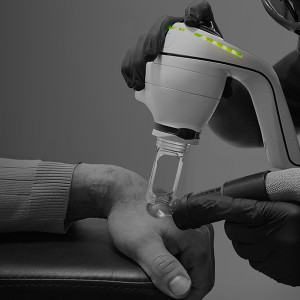Picoseconds to seconds
As technology has rocketed forward in fields as varied as quantum computing and laser tattoo removal, increasingly precise measurements have been invented by scientists looking to measure the minuscule.
But what exactly is a picosecond, or for that matter, its elusive cousin, the yoctosecond?
And how do we convert picoseconds to seconds?
Understanding these measurements is crucial to laying down the benefits of the LightSense™ laser.
Publish Date in article
A PICOSECOND IS ONE TRILLIONTH OF A SECOND
Split seconds
The internationally agreed system of SI units (International System of Units) was adopted by scientists in the 1960s. And as technology develops, new prefixes are added: nano, pico, femto, atto, zepto, yocto.
The LightSense™ laser
The LightSense™ laser has an extremely short pulse width that is measured in picoseconds.
In picosecond laser tattoo removal, the duration of the laser’s pulse is measured in picoseconds - one trillionth of a second.
Pico refers specifically to the duration of the laser’s pulse. That is, how long the pulse or flash of light is on the skin.
How the LightSense™ laser distinguishes itself
Because the pulse width of the LightSense™ laser is 89 times shorter than the average Pico laser, the light touches the skin for a tiny amount of time, causing minimal pain and greatly reducing the chances of skin damage.
It works a bit like ripping off a plaster, if you do it quickly you feel less pain.
You can read about how the LightSense™ laser offers near pain-free laser tattoo removal here.
Now you know what a picosecond is, here are its distant relatives.
Publish Date in article
THE LIGHTSENSE™ LASER
In picosecond laser tattoo removal, the duration of the laser’s pulse is measured in picoseconds - one trillionth of a second.
MILLISECONDS AND MICROSECONDS
Milliseconds
We blink in milliseconds, specifically around 100 to 150. So Olympic gold medals are decided in the blink of an eye.
When Chris Witty won gold for the 1000-metre speed skating at the 2002 Salt Lake City Winter Olympics, officials were scrutinising an unbelievably tiny difference of 130 milliseconds.
Microseconds
Microseconds are a thing of beauty.
At MIT in the 1960s Harold Eugene Edgerton pioneered a method for capturing supremely fast movement on film. This led to the now-famous photograph, Bullet Piercing an Apple (1964).
As stunning as the image is, Edgerton would rather be remembered as an engineer than as a surrealist artist. "Don’t make me out to be an artist,” he once said. “I am an engineer. I am after the facts, only the facts."
Publish Date in article
IMAGE CREDIT: PRINCETON UNIVERSITY ART MUSEUM
.30 Bullet Piercing an Apple (1964) by Harold Eugene Edgerton
ZEPTOSECONDS AND YOCTOSECONDS
Zeptoseconds
In 2020 scientists at Frankfurt’s Goethe University announced that they had measured the smallest unit of time ever, the zeptosecond.
The phenomenon they were trying to measure was how long it takes a photon to cross a hydrogen molecule. This required super accurate timing, with the result coming in at a difficult-to-conceptualise 247 zeptoseconds.
A zeptosecond is a trillionth of a billionth of a second.
Yoctosecond
Last but by no means… Well, it is actually the least.
A yoctosecond is a quadrillionth of a second (on the long scale).
That’s a long, long way from where we started at picoseconds.
If you'd like to discover how the LightSense™ laser can offer laser tattoo removal in months not years, why not speak to one of our experts?







